
Rediscovering Japan

Rediscovering Japan
Travel (Aizu Part 3 (Oouchijuku/Minami-Aizu))

by tomizuta
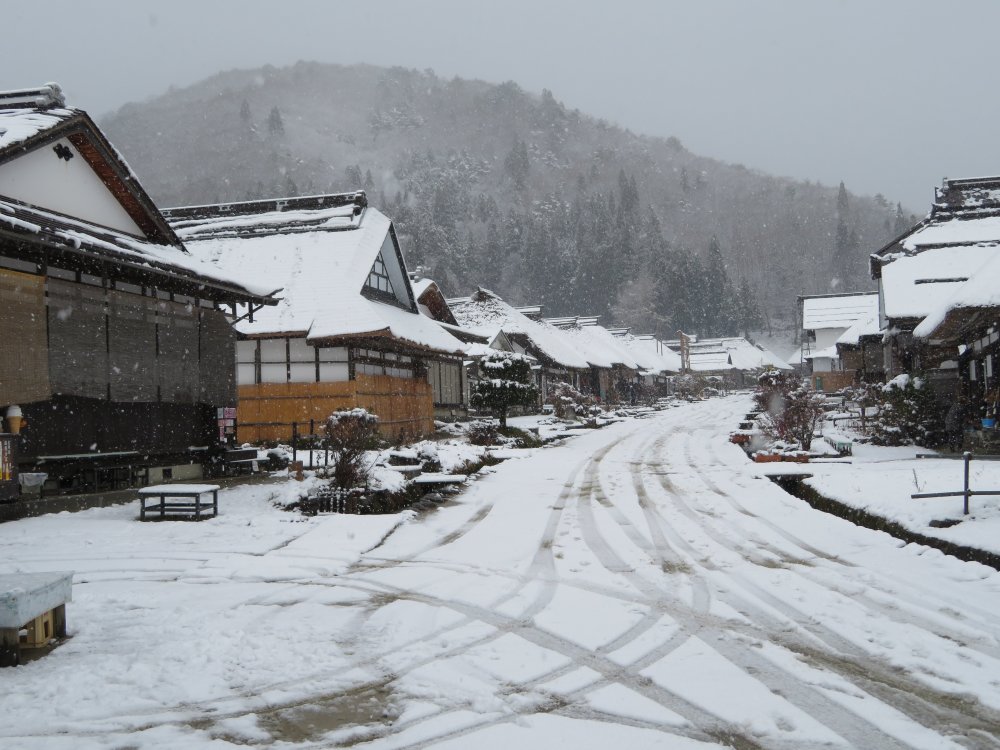
It was snowing quite heavily when we visited Oouchijuku.
We had booked accomodation in Yunokami Onsen because of its proximity to Oouchijuku. The onsen ryokan area is off the main road and it was difficult to find the small road into the area. We were warmly welcomed by the matron and quickly shown to our room. The room was clean, heating was from the onsen heat, not too warm and very comfortable. The matron told us they are doing their best to offer ryokan grade service although they are a minshuku (guest house) and not a ryokan (hotel) which we noticed was true. It was great that you can enjoy the outside bath all day. Many ryokans close their baths from midnight to early morning. Because they have only a handful of rooms the baths are not crowded.
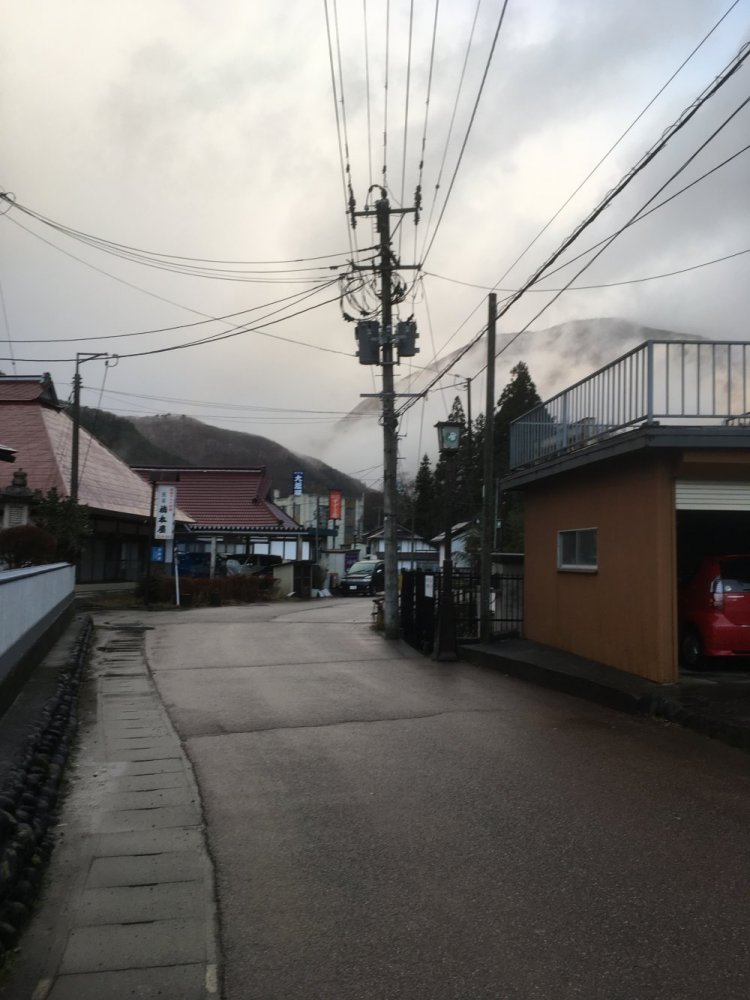
View of the main street of Yunokami Onsen early morning.
Dinner was composed of local delicacies including fried river fish, more than enough to satisfy your appetite. Breakfast is also based on local food and is lighter than in a ryokan. I took an early stroll of YunokamiOnsen. It is a typical small scale onsen.
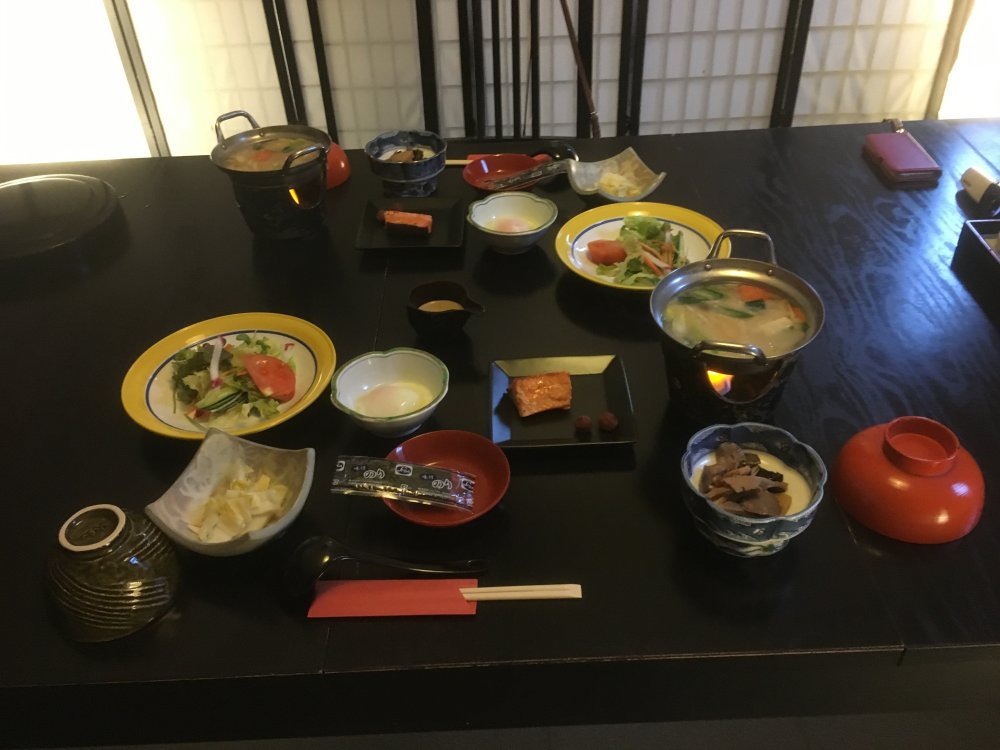
Breakfast was composed of local produce.
We left early the following morning for Oouchijuku about five kilometers from Yunokami Onsen. Oouchijuku is a lodging village on the former Aizu West Kaidou (main road) that linked Aizu-wakamatsu to the Nikkou Kaidou leading to Edo. Oouchijuku was the third lodging village after leaving Aizu-wakamatsu. It is past the mountain pass of Oouchi, so the lodging village must have been a welcoming sight for travelers. The row of lodgings with thatched roofs on both sides of the road runs about four hundred and fifty meters. The weather forecast was right and it was snowing quite heavily when we arrived at the lodging village at about nine am. We parked our car at the car park at the south of the village and made our way north to the village end. I was surprised that the road was much wider than other preserved lodging villages such as Naraijuku. In the middle of the village there is a local history museum in the former honjin (rest place reserved for the feudal lord). We learned a lot in the museum. A film was running that told us that some houses had metal roofing but that they had been rethatched as part of the preservation effort. Oouchijuku was one of the earliest to be designated as an Important Preservation District for Groups of Historic Buildings in 1981.
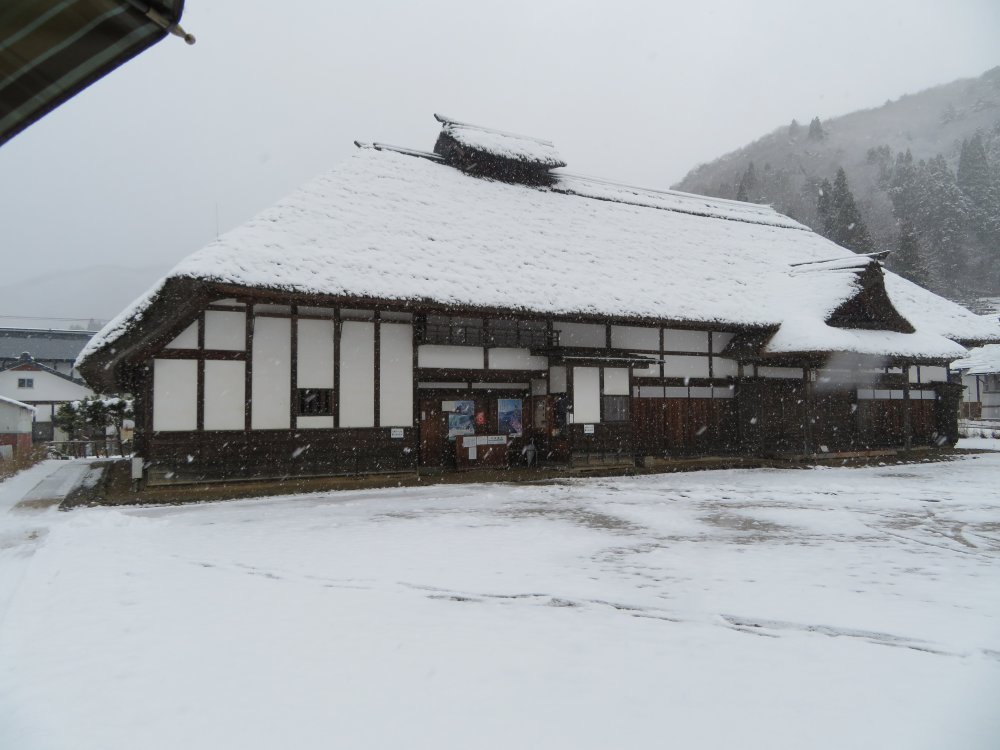
In the middle of the village there is a local history museum in the former honjin (rest place reserved for the feudal lord). We learned a lot in the museum.
We got to the northern end of the lodging village where the Aizu West Kaidou swerves to the right towards the mountain pass of Oouchi. At the corner we found an ojizou. Jizou is a bosatsu. Bosatsu in Buddhism is a monk practicing and preparing to enter into a status of total awareness like Buddha. Because it is so difficult to achieve the same status as Buddha, it is believed that a bosatsu will spread the teaching of Buddha, sympathize with ordinary folk and help guide them to enter heaven. Jizou is believed to be particularly kind to people especially children. As such, jizou statues display a peaceful and kind face. You can see jizou statues not only in Buddhist temples, but also in the corner of the road leading to villages. It was believed that jizou, or ojizou more politely would protect the villagers from all evils.
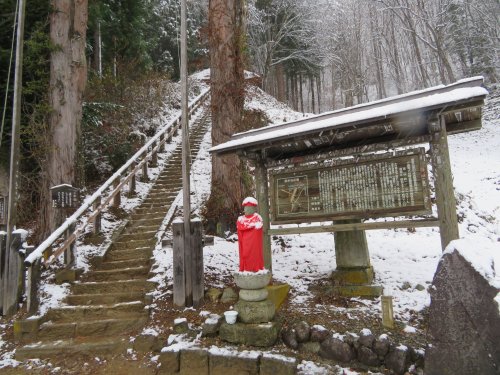
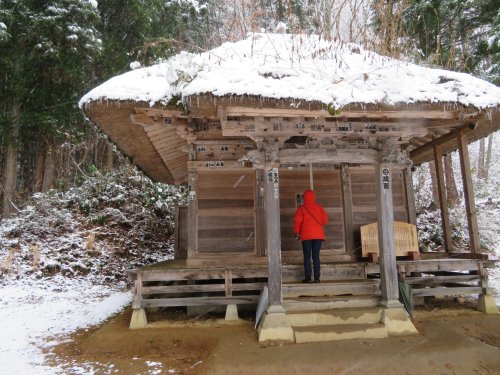
An Ojizou sits at the northern end of the village. Go up the stairs to come to the kannon-dou.
Climbing up the stairs from the ojizou we found a Buddhist temple and a kannon-dou that I talked about earlier in the explanation of Sazaedou that used to house thirty three kannnons. It increased my understanding of the Buddhist heritage in the Aizu district. We had a local dish negi soba noodle and headed to our next and final location.
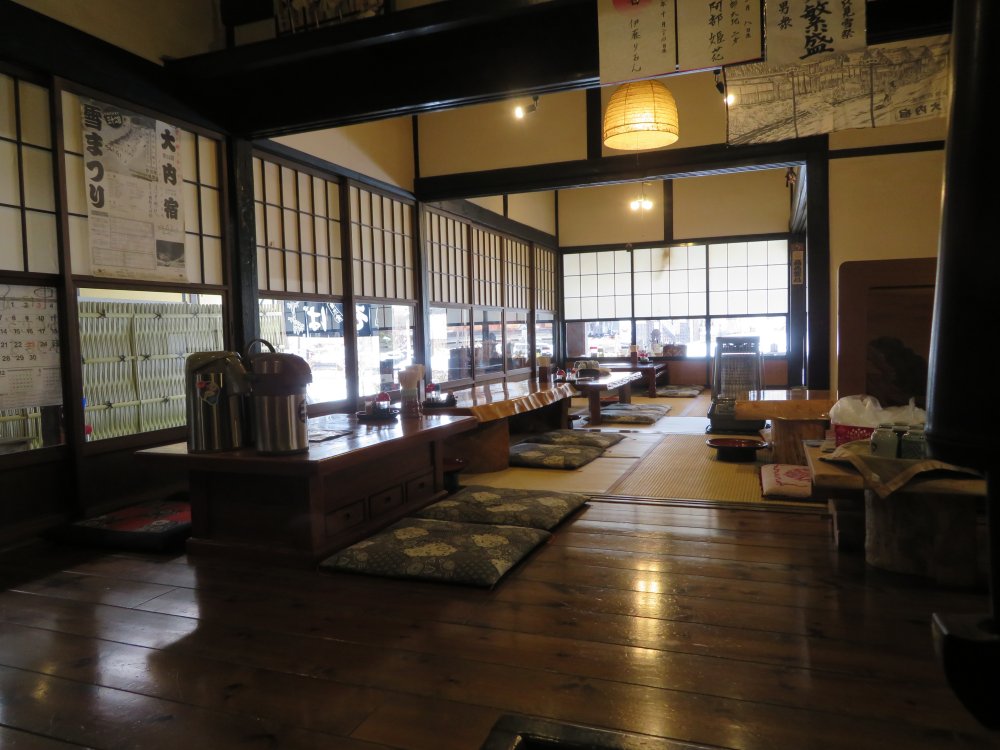
We had a local dish negi soba noodle. At the village museum they were running a film showing the rethatching of this restaurant.
This was a picturesque place called Tou no hetsuri. This is a cliff formation created by rock erosion caused by River Ookawa. Tou means tower and hetsuri is the local dialect for cliff, so literally the name of the site is towering cliffs. It must be beautiful when the trees turn color in autumn. Unfortunately it was a bit too late and the leaves had started to wither away. There is a wooden suspension bridge over the river perhaps fifty meters long that you can cross for free. Once you cross the bridge, go down a couple of steps and swerve to the right which will lead to another kannnon shrine. Overall it was a great three day excursion in Aizu that I would certainly recommend experiencing.
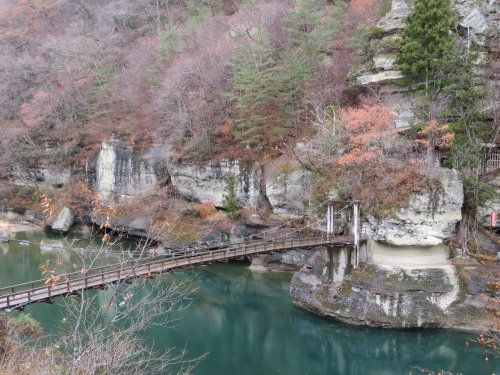
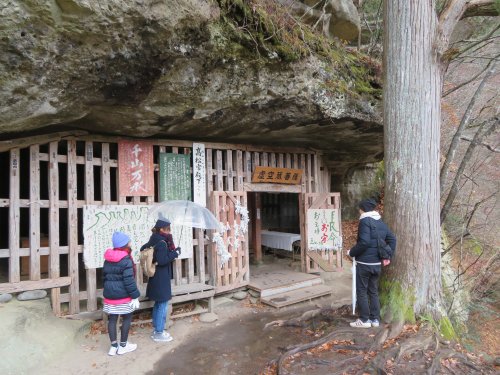
The wooden suspension bridge over the river that you can cross for free (left). Cross the bridge, go down a couple of steps and swerve to the right and you will get to another kannnon shrine (right).
From Tou no hetsuri we went to visit Nakanosawa Kannon. I explained about
kannon in my article on Sazaedou in Aizu-wakamatsu (Aizu Part 2) in particular
the importance to pay respect to thirty three kannons. Nakanosawa Kannon
is the eleventh amongst the Kurairi thirty three kannon pilgrimage route.
This kannon shrine is understood to have been built in the early Muromachi
era meaning most likely the fourteenth century. The architecture is valuable
in that it follows the paradise style (Amidadou) depicting paradise as
may be seen in Byoudouin in Uji, Kyoto, Fukijioodou in Ooita Prefecture
and Shiramizu amidadou in Fukushima Prefecture. If you visit Oouchijuku
it is a place you shouldn't miss.
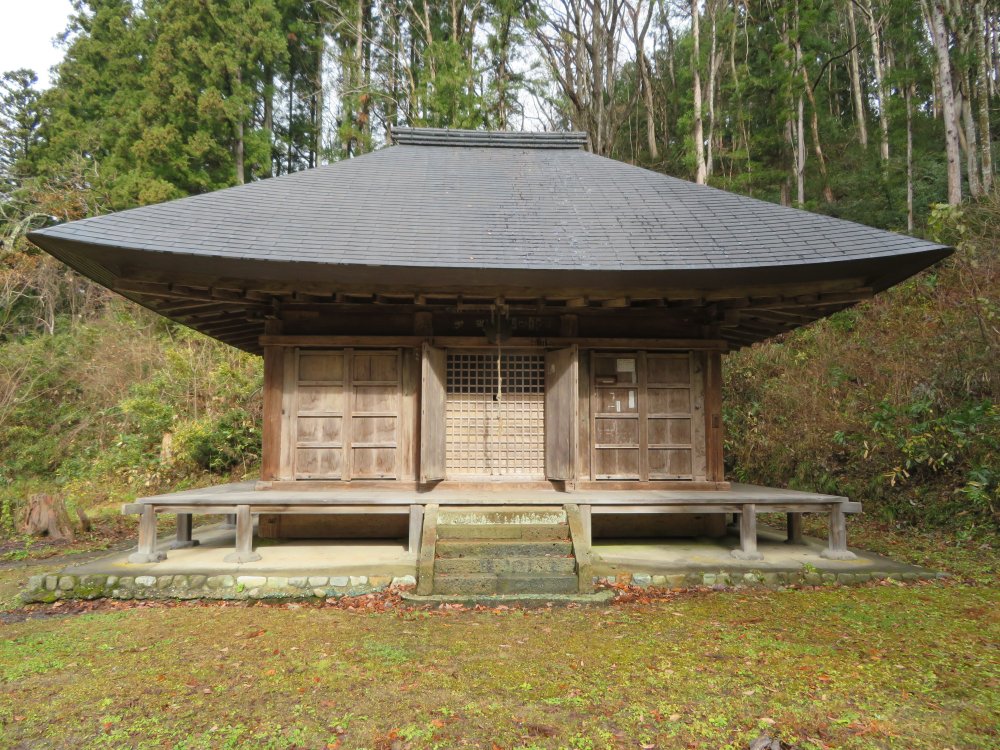
Nakanosawa kannon-dou sits quietly in the woods depicting paradise.